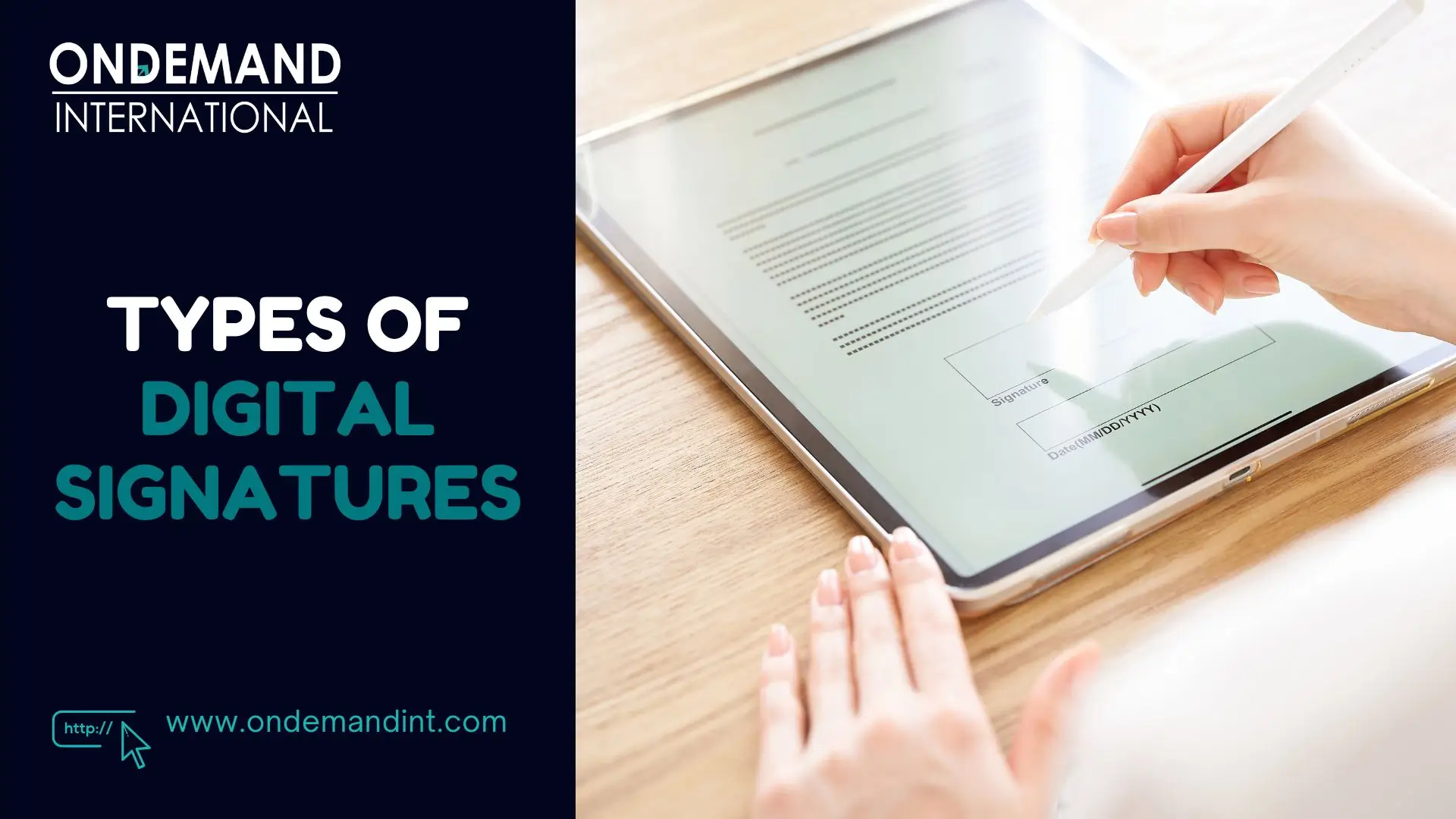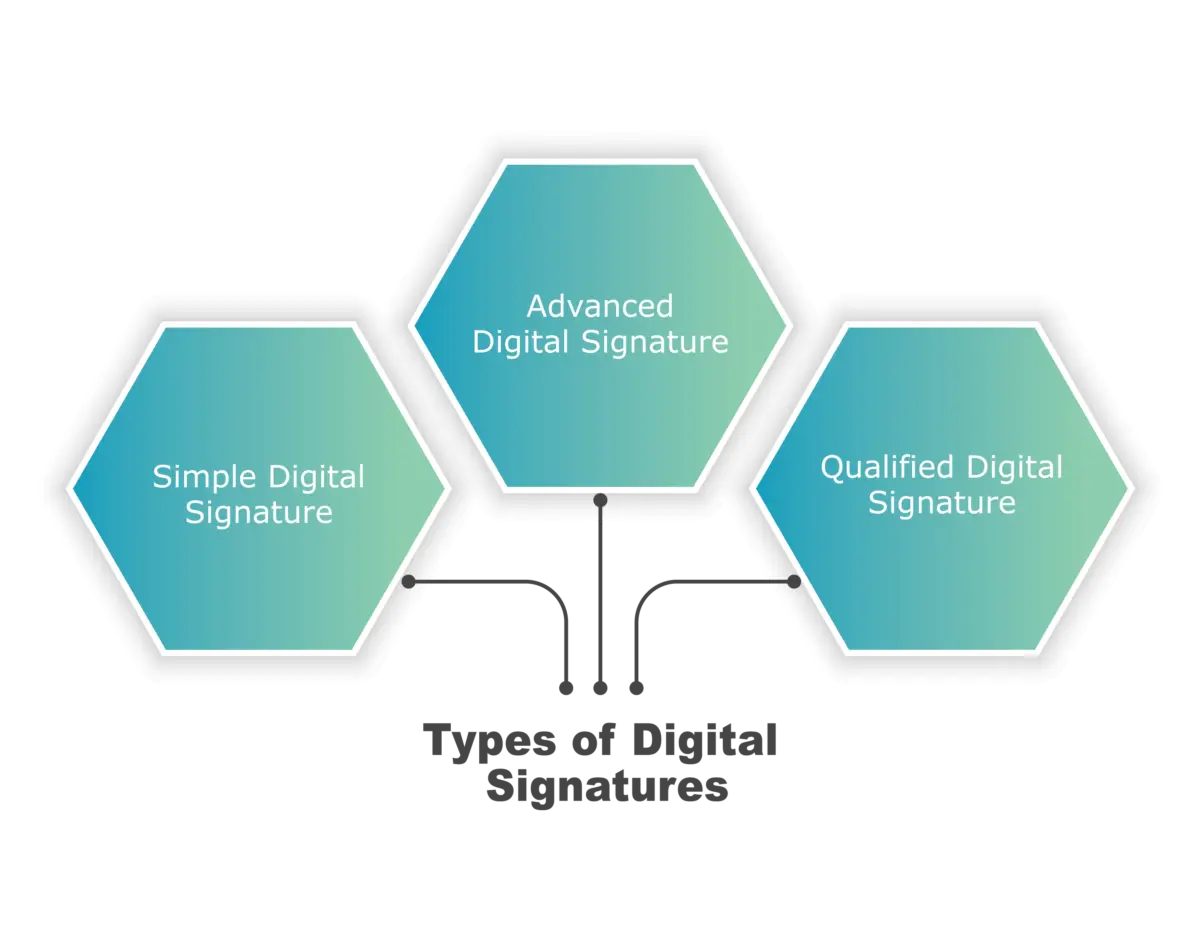
The importance of digital signatures has grown in the digital era as they offer a trustworthy and secure means of authenticating electronic documents and transactions. Because the internet is an extensive network, documents and messages sent across it are not protected. As a result, many people and organizations have adopted the idea of including digital signatures in their digital files as a means to preserve their documents. There are different types of digital signatures, depending on their requirement.
This article provides an overview of digital signatures and illustrates the types of digital signatures available.
Meaning of Digital Signature
A digital signature is an electronic signature used to confirm the integrity and accuracy of a digital record. It applies mathematical methods to authenticate the material in an electronic document and verify the sender’s identity.
It is a form of e-signature that is produced with the help of a Certified Authority and uses public key infrastructure to cryptographically attach the signature to the message.
A digital signature ensures that the contents of a digital document won’t be changed while it is being sent or received. A digital signature ensures a digital document’s non-repudiation, reliability, and validity.
The following are some of the benefits of different types of digital signatures:
- Time-saving
- Cost-saving
- Increases user convenience
- Provided by Certified Authority(CA)
- Versatile and simple to use
Algorithms of Digital Signature
Signature Verification Algorithms
Signature Verification Algorithms play a crucial role in processing Digital Signatures and the associated verification key to produce specific values. Additionally, these algorithms utilize the same hash function on received data to generate a hash value.
Key Generation Algorithms
It would be quite simple to tamper with the data without the assistance of key generation algorithms, that assist preserve authenticity and integrity. They also prevent anyone from impersonating the sender.
Signing Algorithms
Signing algorithms create one-way hashes of the data intended for signing. Subsequently, they encrypt the hash value using the signature key. The resulting encrypted hash, combined with other information, constitutes the Digital Signature.
3 Types of Digital Signatures
There are 3 types of digital signatures used to protect documents.
The 3 types of digital signatures are:

1. Simple Digital Signature
- The simple digital signature is the most basic type of digital signature which does not require extensive verification of the signer or any link between the signature and the signer.
- It can appear in any electronic format, such as clicking the “I Agree” button or placing a wet signature into a document after having it scanned by a digital device.
- This type of digital signature can be used when it is not necessary to validate the signer’s identity.
2. Advanced Digital Signature
This signature requires a key or certificate linked by the signatory’s electronic identification (identity). There is some level of identity verification required for such signatures. Only the signatory has absolute control over the private key that was used to generate the digital signature.
Usually, a Certificate Authority verifies these signatures. They are frequently sent using a secure signature-generating tool that can produce audit trails and other kinds of data transmission proof.
These types of digital signatures give a higher level of authentication.
Adopting digital signatures built on Public Key Infrastructure (PKI), these types of digital signatures comply with the following requirements:
- Be connected explicitly to the signatory.
- Ability to verify who signed the document.
- The digital signature is attached to the document in such a way that any alterations to the content can be discovered.
In contrast to Simple Digital Signatures, advanced digital signatures provide a greater level of protection to digital documents. This types of digital signatures require the signer’s authentication to verify the content of a document.
3. Qualified Digital Signature
The maximum level of protection is provided by the qualified electronic signature.
A Qualified digital Signature is an Upgraded Electronic Signature based on a qualified certificate. It is produced using a signature-generating tool called the Qualified Electronic Signature Creation Device (QSCD). For qualified digital signatures, a certification based on public keys generated using the appropriate technological procedures is necessary.
These types of digital signatures are able to authentically confirm the signatory who has signed the message and guard against fabrication or modifications made after signing the document. It offers the highest legal protection because of its better degree of protection.
Following are a few features of the Qualified digital Signature (QES):
- Permit the digital signature’s creator to have complete control over the keys used to make it.
- Able to authenticate and integrate the sender’s identity.
- Able to connect its signatory to the digital message.
- Determining whether the content has been altered after signing the digital document.
- If the signed document has been manipulated in any way, the signature will be invalidated.
A Qualified Electronic Signature Creation Device must ensure the following:
- The private key is under the exclusive control of the signer.
- The signature creation data that is produced is administered by a qualified trust provider.
- The signature creation data is to generate a signature that is distinct, private, and safeguarded against fabrication.
Which is the most suitable type of digital signature?
The most suitable type of digital signature is the qualified digital signature as it offers the highest form of protection of the document against forgery or tampering of the document. Moreover, the digital signature is generated using a qualified signature-generating device.
Advantages of Implementing Digital Signatures
- Authenticity: It allows the receiver to verify the sender’s identity.
- Integrity: It allows the receiver to assess the message’s validity.
- Non-repudiation: The sender would not fraudulently claim they never sent the message or that it was invalid.
- Speedy transactions: Individuals can sign and send information digitally, such as emails, by using the digital signature option. It reduces laborious and lengthy procedures and hence, saves a lot of time.
- Reduce the frequency of mistakes: Digital signatures decrease the possibility of errors because each step of the procedure is authenticated.
- Security: A digital signature will guarantee that information in the digital document is safe from the moment it was issued.
Conclusion
A safe and effective way to confirm the legitimacy and security of digital files is through the use of digital signatures. Individuals and organisations can select the level of safety and legal approval that best matches their unique needs by using one of the many available forms of digital signatures.
Companies can improve digital trust, expedite operations, and lower costs by implementing digital signatures. The article gives a brief overview of the various types of digital signatures.
FAQ’s
- While an e-signature is used to verify the document, a digital signature is primarily used to protect the document.
- A digital signature is authorized and governed by a Certified Authority(CA) which is not the same in the case of an electronic signature.
- Simple Digital Signature
- Advanced Digital Signature
- Qualified Digital Signature
The qualified digital signature offers the maximum level of security for a file against forgery or document manipulation, making it the most appropriate type of digital signature. Additionally, a qualified signature-generating device is used to create the qualified digital signature.

